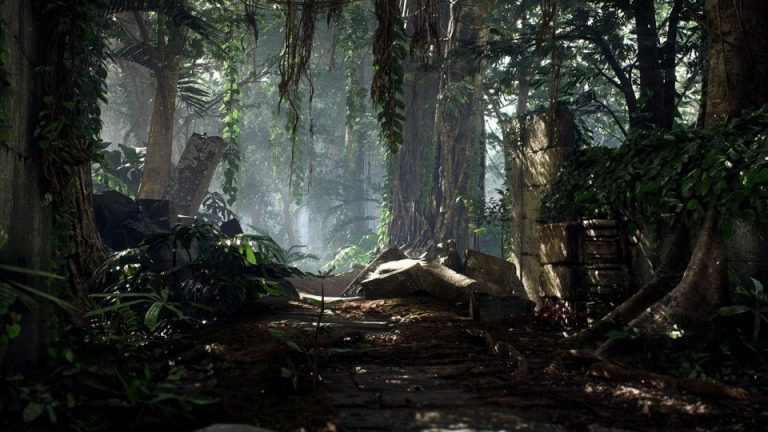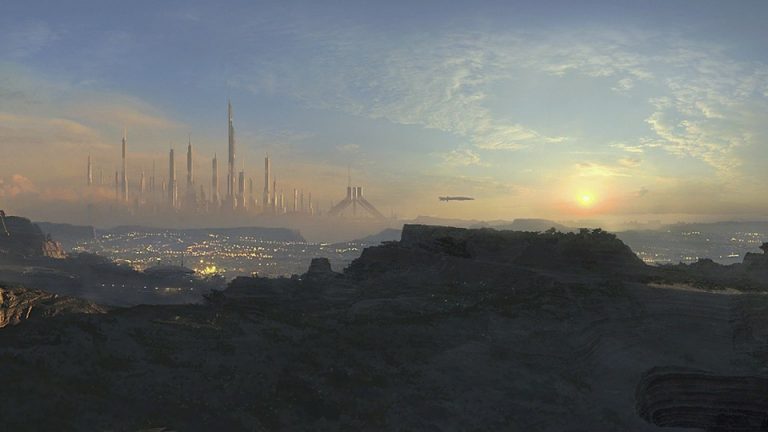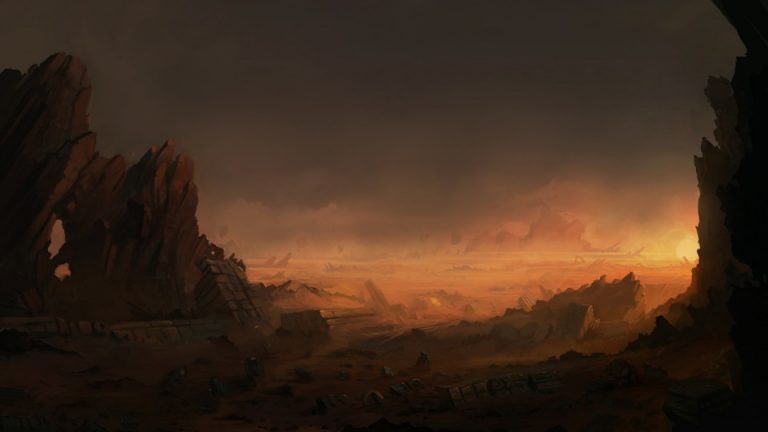
The Foross Sector is located near the edge of Known Space, at the outermost point where the regions of vhen and enkai colonial influence meet, and give way to unexplored space, and only a bit more than a week from the genya homeworld Upara by cargo freighter. It saw some very extensive mining in the 5th and 6th century, but was abandoned by government-owned mining corporation in the early 600s.
Since then, the sector’s population has dropped from more than 100 million people to less than 60 million due to emigration. The local economies were fully privatized, and economic output declined down to 20% of its peak levels in the late 6th century. The greatly scaled down mining operations are used to fund the import of advanced electronics and medical supplies, but almost all the local infrastructure and industry relies on 200 year old heavy machinery parts salvaged from abandoned mines, and almost half the sector’s population is working in food production, often for mostly personal consumption.

Sarhat is an arid planet dominated by rocky deserts and a number of enclosed salty seas that are home to oxygen-producing bacteria, and whose continuous evaporation provides the scarce rain that fills the planets rivers. While the salt seas are highly alkaline and covered in thick layers of pink bacterial sludge, the seasonal rivers are regularly replenishing underground caverns in porous rocks, which create numerous oases that have become the main sites for settlements on the planet. Though vegetation on Sarhat is sparse, the planet is home to many species of native animals. Most are fairly small and of little threat to people, but some are large enough to be worthwhile to hunt for food. Agriculture of hardy crops in the soil of Sarhat is possible, but the import of fruit and vegetables from Kion is the main source of cargo traffic within the sector.
Sarhat was first settled in 523 by enkai from the Parakarit colony, who established a small survey station as an outpost of their settlement on Kion. Discoveries of numerous small, but still highly concentrated sources of Iridium and Palladium on Sarhat in 547, and decreasing outputs from the mines of the Turik colony on Halon, led to nearly all the Turik mining operations being moved to the much less hostile and inhospitable planet. The Turikan cities and settlements of the Tauros colony are now home to 15 million people ruled by eight oligarch families. The older Parakarian colony of Partenas is home to 5 million people, and are ruled by 4 oligarch families. Another estimated 2 million people live scattered throughout the hills or the ruins of settlements abandoned after the Turik and Parakarit governments cut all infrastructure funding on the planet.
Counted together, Turikan and Parakarian enkai make up the largest population on Sarhat, and all the oligarch families on the planet are enkai. But they are outnumbered by the large populations descended from alien migrant workers, mostly chosa and tubaki who deal well with the hot and dry climate of the planet. The Turikan and Parakarian oligarchs often prefer to have dealings among themselves, but at the end of the day, business interests go above cultural animosities.

Kion is one of the two most hospitable planets in the Foross Sector. Its surface is covered in several large continents, separated by a global network of winding narrow seas. Except for the polar regions and the higher mountain ranges, much of the planet’s land is covered in dense vegetation. As expected from a planet like this, Kion is home to millions of species of native animals, only a tiny fraction of which has ever been scientifically described or named over the past two centuries.
While the first settlers from Turik immediately went to full scale mining on Halon, the Parakarit government decided to first focus on setting up sustainable food production in the sector to greatly reduce the costs of supplying later mining operations. The Solanika was established in Kion in 503 and some mining was begun in Lerinas in 514, but it never reached the scale of the Turikan mining operations on Halon and later Sarhat.
The mines on Halon ended up buying large quantities of food from Kion, as even with the enormous prices paid to the rival Parakarians, this was still cheaper than relying entirely on shipping food in from Turik. Correspondingly, the vhen colony on Palan established the Arkon outpost on Kion in 558 to compete with Solanika, though this was exclusively a food production facility with no plans to do any mining on Kion.
Today, the Solanika colony numbers 12 million people ruled by five enkai oligarchs. Arkon is home to 5 million people, ruled over by three oligarchs. Two vhen, and one Turikan enkai.

Palan is a mostly barren planet, but has sufficient microbial life in its numerous small seas to maintain an atmosphere dense enough and sufficiently high in oxygen to be fully breathable for most species. However, the radiation from its sun is dangerously high across most of the planet, and all settlements are located near the south pole, where due to the planet’s low axial tilt, the sun always stays low above the horizon all year. Creating the impression that each day consists of only a very long morning and equally long evening. The most striking feature of Palan’s sky are the planet’s large rings that are visible over the northern horizon during the day and most of the night. What plant life exist on the mostly barren rocks that make up most of the land surface consists mostly of lichens and a few simple shrubs. No animals are raised on Palan, and there are no native land animals larger than 1 cm in size.
Palan is home to two main settlements. Sarantal was founded in 497 by a the Askal Directorate from the neighboring Askal sector to serve as workers’ housing for the construction of a large fuel and repair station in orbit around Palan’s moon. As commerce in the Foross sector greatly increased in the mid-500s, both the station and the settlement were greatly expanded, and gained a large new population of genya workers. At 9 million people, Sarantal is now the single largest city in the entire sector.
A consortium of mahir corporations established the Usomi colony in 579, some 200 km from Sarantal. Over the following century, it gained a population of 4 million mahir and genya.

Meruna was the last planet in the Foross Sector to be settled. Even though it is one of the most habitable planet in the entire sector, second only to Kion, its lack of valuable mineral resources had made it completely irrelevant to any of the mining companies that originally drove the development of the sector. The Keritika colony was founded by firax in 631, after most of the large colonial companies had already ceased operations in the sector and sold off most of their remaining assets. The purpose of Keritika had never been to become economically profitable, but to primarily to serve as a self-sustaining embassy of the firax states closer to the regions of space inhabited by the vhen, mahir, and tubaki. The only direct neighbors of firax space are the enkai and chosa, and they considered it in their collective best interest to have direct contact and establish relationships with other peoples as well.
Meruna is a largely oceanic planet, but home to several groups of large islands that cover about 8% of its surface. Most land is relatively flat and covered in a wide variety of grasses, though there are many types of native shrubs and scattered clusters of small trees as well. This makes the planet very suitable for raising introduced farm animals. While animal life in the sea is extremely abundant and diverse, land animals consists mostly of small birds and burrowing animals, with no large predators that could pose a threat even to firax children.
Though the planet’s 5 million population consists mostly of equal numbers of firax and genya, various enkai and vhen oligarchs from other planets in the sector have been trying to take control over the major private businesses on Meruna for years, and have recently been pressuring the government in Keritika to privatize several state-owned companies to take over.

Halon was the first planet in the Foross sector to gain a permanent settlement after the discovery of three meteor impact sites rich in rhodium, palladium, and iridium by prospectors from Turik. The Turikans began mining on Halon in 478, bringing in large numbers of chosa miners from the other side of enkai space to work in the planet’s harsh conditions. Most chosa in the Foross sector claim to be descendants of those first miners, but statistically most of their ancestry comes from later generations of chosa migrating to the sector.
Halon is a very old planet, orbiting an old star in the early phases of its red giant stage. It is also believed to be mostly dead.
The planet’s atmosphere covers the skies in an almost permanent brown haze that reflects a large portion of the star’s light and is the only reason it is still possible to walk on its surface without protective suits. The air’s oxygen content is high enough for all humanoid species to survive, but considerably lower than what most people would consider comfortable to breath. New arrivals to the planet often suffer from headaches and fatigue and typically wear oxygen masks until their bodies get used to it, which can take several weeks. Enkai born in the somewhat thin atmosphere of Turik or chosa were the only people able to perform hard physical labor under these conditions.
There is no animal or plant life on Halon, but it is quite possible that microbial life could still exist underground in some parts of the planet that keeps releasing oxygen into the air. Geologists from the mining companies reported finding some fossils in the debris from the mines that could indicate that Halon once had an abundance of small shrubs, but no paleontologic studies have ever been conducted on the planet.
After the discovery of new precious metal sources on Sarhat and the founding of the Tauros colony in 547, the mining companies started to move all personnel and movable equipment from Halon, and by 564 the last Turikan mine on the planet ceased operations. Today, there are less than 20,000 people believed to still be on Halon. Most of them pirates and smugglers using the abandoned mine shafts as hideouts, or scavengers looking for abandoned mining equipment that hasn’t been picked clean of valuable components a century ago.

Ataris is a small rocky planet largely covered in ice that orbits close to a hot brown dwarf. The planet has a fairly dense atmosphere of nitrogen and carbon dioxide that traps enough heat from the brown dwarf’s dim glow to make it possible to go out on its surface without heated environment suits, but its complete lack of oxygen in the air makes it impossible to survive without breathing masks and oxygen tanks.
The planet is home to several science stations dug into the black rock of its jagged mountains by Takkusat Research from Usomi on Palan over the last 50 years. There are some 17,000 people mahir on Ataris at any given time, but it has no permanent residents and is considered by Takkusat Research to be part of Usomi territory.
©2021-2025 Martin Christopher